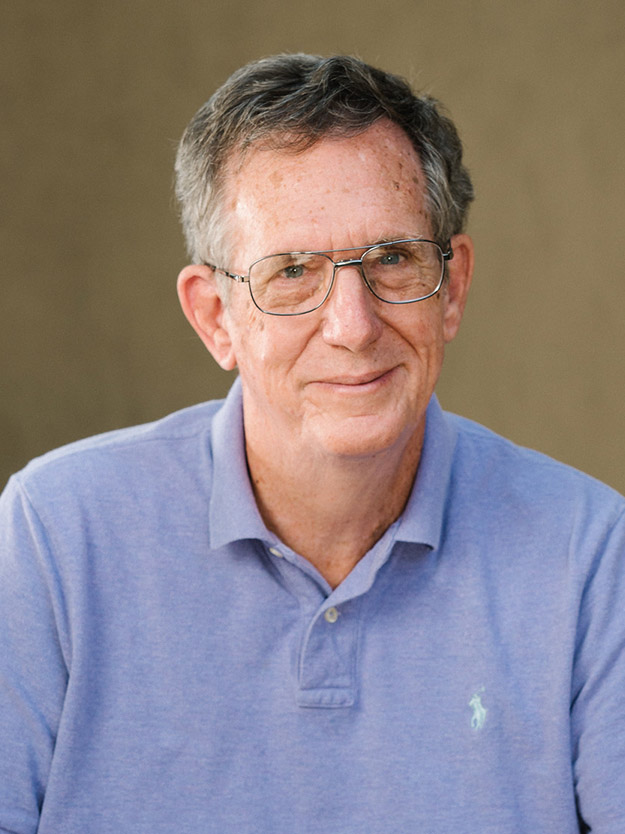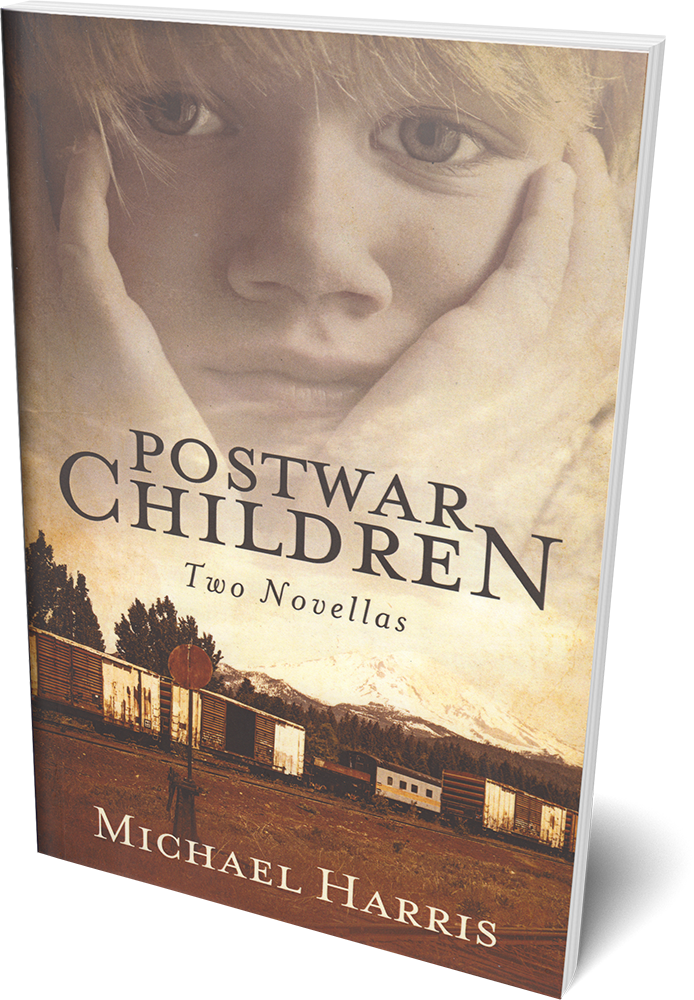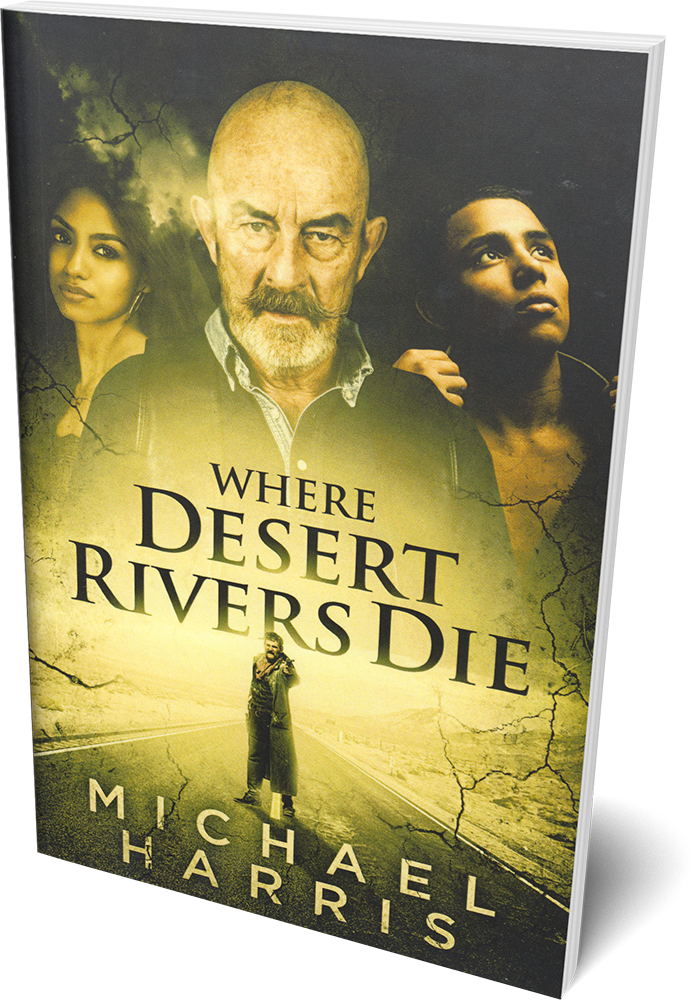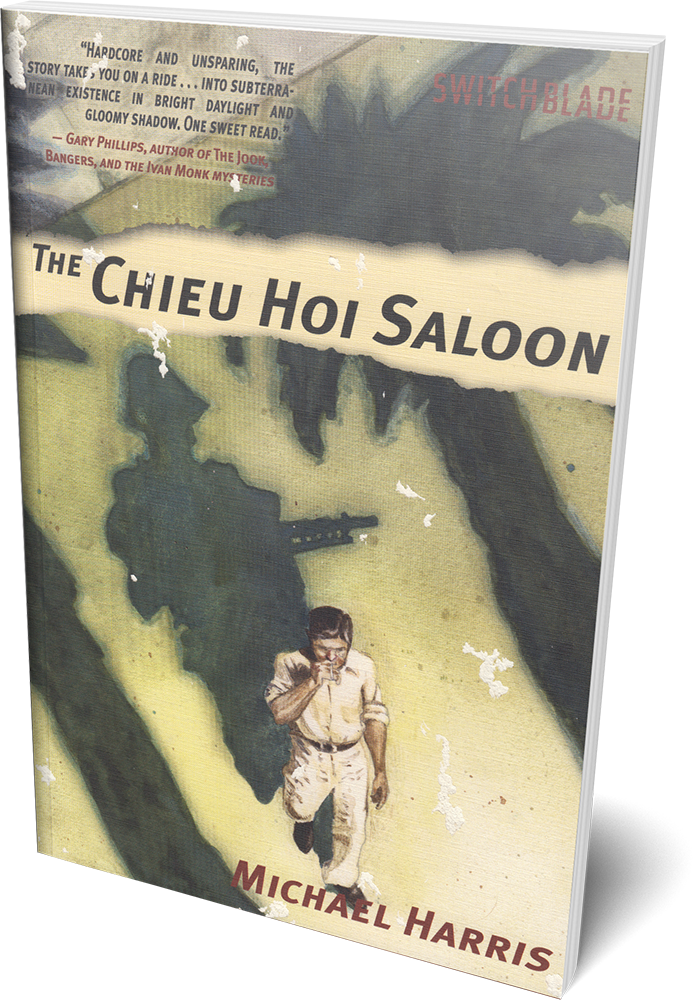The author
His Story
Michael Harris grew up in Dunsmuir, CA, a small railroad town near the foot of Mount Shasta. His father was a freight conductor for the Southern Pacific. His mother taught in the Dunsmuir schools. In fact, she was his eighth-grade English teacher and showed him how to diagram a sentence. He received a B.A. in English and an ROTC commission at the University of Oregon.
After a year of delay to attend Harvard University, where he received an M.A.T. in education, he reported to the Army artillery school at Ft. Sill, OK, and served in Vietnam in 1968-69 as an information officer with the 1st Air Cavalry Division.
Harris worked for 30-odd years as a reporter and editor on several West Coast newspapers – the Redding, CA, Record-Searchlight; the Voice of Bellevue, WA; the Las Vegas, NV, Review-Journal; the San Luis Obispo, CA, Telegram-Tribune; the Long Beach, CA, Press-Telegram; the Los Angeles Times; the Riverside, CA, Press-Enterprise; and Variety during one Oscar season. He reviewed books for the Times for more than 20 years.
Between newspapers he traveled to Norway, Greece, Japan and England. For 1973-75 he was accepted into the University of Iowa Writers’ Workshop, where he received an M.F.A. in fiction writing. He studied under the likes of John Irving and was classmates with T.C. Boyle, Jane Smiley, Allan Gurganus and Ron Hansen.
Harris later taught freshman composition for two terms at Cal Poly San Luis Obispo and “English conversation” for a year and a half in Tokyo, where he met his wife, Takako. For the last 40 years, they have lived in Long Beach.
His debut novel, “The Chieu Hoi Saloon,” set during the 1992 Los Angeles riots, was published by PM Press of Oakland, CA, in 2010. Publishers Weekly said: “This impressive novel reaches deep into the souls of its characters.”

Ten Things About Michael (you probably didn’t know)
- Louisa May Alcott is a distant ancestor of mine. (The Mays were a branch of my mother’s family.)
- Jack London’s first wife – the one he left – was my Oakland-born mother’s great-aunt. (As you can imagine, the family had mixed feelings about old Jack.)
- I stuttered badly as a child and for much of my early adulthood, so when I watched “The King’s Speech” I was sweating bullets.
- I’m a hopeless golf addict and have played in rain, snow, fog, 117-degree heat, high winds, a flood and a forest fire.
- I’m so sentimental, or so much a creature of habit, that I still bank at the same bank and buy gas from the same oil company as I did in my home town.
- I love road trips, especially in a ragtop sports car and in uncrowded mountain country. Checking out historical markers, stopping to eat at random diners.
- Classical music hooked me, somehow, when I was a little kid. Even though I don’t play an instrument and can hardly carry a tune.
- I lettered in four sports in high school even though I wasn’t very good at any of them. (The advantages of a small school, where any warm body got a spot on a team.)
- Four years after I was a graduate student at Harvard, I was briefly a homeless person wandering the same Boston streets.
- The only politician whose name I ever stuck on my bumper was George McGovern.
Michael Answers Your Questions
What made you want to write fiction?
Yet you didn’t publish your first novel until you were over 60. What took you so darn long?
What did you finally do?
What did you do then?
Which is your favorite among your books?
What led you to move on from autobiographical fiction and tackle a distant historical subject, as you do in “White Poison”?
In 1969, flying back from my Army tour in Vietnam, I read William Styron’s Pulitzer Prize-winning novel “The Confessions of Nat Turner.” It was the most devastating account of slavery this white boy had ever seen. Styron had grown up in Tidewater Virginia, a few miles from where Turner’s 1831 revolt had taken place, and had heard all the front-porch stories. I envied him.
My first clue came when I was reading “Buy the Chief a Cadillac,” a novel by an Oregon writer, Rick Steber, about the Klamath tribe in the mid-20th century. It contained a single sentence of dialogue by an old woman who recalled that “miners from Yreka” led by Ben Wright had invited Native people to a feast in 1852 and poisoned them.
“What’s this?” I thought. “Yreka?” Our own Yreka, the seat of Siskiyou County, one of the other little towns we played high school football and basketball against? And poison? Who was Ben Wright? A decade later I stumbled across a second clue, about a bigger massacre a year earlier and 50 miles to the west, also involving poison, this time with the Army as the culprit. The old reporter in me smelled a scoop, and I began my research.
Who was Ben Wright?
You mention William Styron’s novel. That happens to be the book that kicked off the “cultural appropriation” issue that remains with us today. Ten black writers wrote their own book complaining about Styron’s. They didn’t like his portrayal of Turner, and they felt it was their story to tell, not a white person’s, no matter how well-meaning. Since you aren’t Native American, what right do you have to tell this story?
I tried to avoid the most obvious kinds of appropriation. With one exception, I didn’t tell any of the story through the Indians’ point of view. I’m not qualified to do that. This is a novel about guilty white people, about whom I think I do know a little — the miners, loggers, ranchers and soldiers who almost wiped out the Shastas and related tribes without bothering to learn much about them. The exception is a transcript made by my lawyer-narrator, Alexander Wells, of the testimony of Chetco Jenny, the woman who helped kill Ben Wright. And even then Wells admits that he has doctored Jenny’s words to fit Victorian stereotypes of the noble, mournful way Indians “should” speak.
Is this enough? If not, I can only plead guilty and insist that, like Styron, I had good intentions.
Whether or not a particular number of Indians died in a particular way on a particular date near modern-day Fort Jones in 1851, the fact remains that the Shastas and neighboring tribes did almost disappear in one way or another. Would you say it's fair to call what happened to California's Native peoples "genocide"?
Yes. It’s estimated that about 300,000 people lived in what’s now California when Europeans first contacted them. Only about half as many were left at the time of the Gold Rush and only a tenth at the turn of the 20th century. True, disease killed far more Indians than bullets, but there was plenty of deliberate, organized, subsidized killing too, as historian Benjamin Madley documents in “An American Genocide: The United States and the California Indian Catastrophe, 1846-1873” (Yale University Press, 2016). And we can’t forget the larger context. Over 500 years, from Alaska to Tierra del Fuego, Native populations exposed to European conquest suffered similar losses – 80 percent, 90 percent, sometimes all. Is there any other word for it?
Other Books

Romantic History
Two spectacularly mismatched young people meet at a halfway house in a Seattle suburb in 1971. Paul Siebert is a reporter, a shy, depressive Vietnam veteran, already chastened by the blows life has dealt him.

Postwar Children
In the early 1950s, the Southern Pacific Railroad no longer runs the state of California, as Frank Norris described it in “The Octopus.” It’s just another company. But in the little town of Dunsmuir, it still has enough power to force an injured brakeman, Frank Hiller, back to work to preserve its safety record, and Hiller, an angry man to begin with, passes the fear and pressure on to his wife and children.

Where Desert Rivers Die
Warren Holt has escaped his trailer-trash background through hard work and playing by the rules. But when he is unjustly fired by a Southern California newspaper, punches out a supervisor in a fit of rage and inadvertently kills the man, Holt’s middle-class dreams are destroyed.

The Chieu Hoi Saloon
Set against the backdrop of the riots sparked by the beating of African American motorist Rodney King, Vietnam vet and reporter Harry Hudson wanders the city to forget his troubled past. Trying to cope with the posttraumatic stress disorder that has plagued him since his military tour, the overweight, depressed, and sex-obsessed Hudson stumbles through the underbelly of South Central LA
